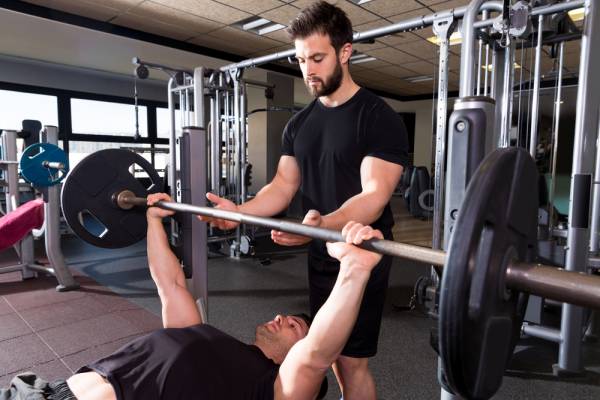The argument has been around for decades. Is multiple-set strength training better than single-set strength training? For the uninitiated, multiple-set training means performing more than one set of repetitions as compared to a single set of repetitions per exercise. Examples of multiple sets would be 2 x 15, 4 x 10, 5 x 5, 8 x 3, and 3 x 12. Single set examples could be 1 x 10, 1 x 25, 1 x 15, or 1 x 6.
The Single-Set versus Multiple-Set Debate
The debate will never end as long as mankind continues to believe more is better. As a result, many fail to experience what true, all-out effort entails when strength training. To better understand the debate consider the following talking points:
- If it was true that multiple sets trump single sets, why are the proponents of single-set strength training obtaining positive results?
- How do you define single-set strength training? Is it one set per body part? What about a single set per exercise, but with multiple exercises prescribe for the same body part?
- How do you explain a multiple set/repetition script that doesn’t offer optimal muscle stimulation? That is, multiple bouts are performed, but with sub-optimal effort that stimulates nothing. A greater volume of training means nothing unless it efficiently stimulates muscle tissue.
- If multiple sets are critical to optimal development, how hard should you work if the prescription calls for two, four, or six sets?
- If one set is effective, then it stands to reason that more should be better, right? Should you then perform 10, 15, or 20+ sets based on this logic? Where do you draw the line between training volume and overtraining?
- If you perform a five-set script with sub-optimal effort each set, is this superior to performing a single-set program at a high-level of effort?
The Problem With Percentages of 1RM
Many multiple-set programs are based on a percentage of a one repetition maximum (1RM). In example, 75% of a 1RM is assigned for twelve repetitions or 87% of a 1RM for five repetitions. Hey, it’ a plan, but do twelve repetitions at 75% and five repetitions @ 87% provide effective muscle overload?
If sixteen repetitions were possible with 75% of a 1RM, halting the set at twelve repetitions would obviously be less than optimal. On the other hand, using 87% of 1RM may only result in four good repetitions even though the goal is five reps. In that case, it would be more productive even though the five-rep goal was not attained.
The percentage of a 1RM system applied to multiple-set protocols is flawed due to a lack of accuracy with prescribed repetitions and appropriate resistances used to create optimal overload.

The Purpose of Multiple Sets
If multiple sets are performed, are all sets completed with the goal of recruiting and overloading a maximum amount of muscle tissue? If not, what is the purpose of each set? Again, arbitrarily performing “x” number of repetitions for “y” sets can be inefficient if those bouts don’t create muscle overload.
The number of sets per muscle group needs to be addressed. Take a look at a plan to target the chest (pectorals). Here is a typical set/repetition script used for that purpose:
- Barbell decline press – 3 x 10
- Machine flat bench press – 4 x 8
- Dumbbell incline fly – 3 x 12
- Close grip push ups – 3 x maximum repetitions per set
Are all of those sets necessary? Absolutely not. That is way too much training volume for one part of the body. A better menu would be as follows if the trainee truly worked as hard as possible on each set performed:
- Barbell decline press – 10 repetitions to volitional muscular fatigue (VMF)
- Machine flat bench press – 8 repetitions to VMF
- Dumbbell incline fly – 12 repetitions to VMF
- Close grip push ups – maximum repetitions to VMF
I think you get my point. Therefore, to make your training time more time-efficient and effective for creating muscle overload, I recommend these tips for single-set strength training.

9 Ways to Get the Most Out of Single-Set Strength Training
- Work to volitional muscular fatigue, safely. Go all-out and recruit as much muscle possible. A good analogy would be the 100-meter sprint. You do not sprint hard for 85 meters then coast the last fifteen. Run hard through the finish line.
- Use minimal training sets (volume). Aim for quality, all-out sets to VMF (safely). This is a direct and measurable approach that allows for proper recovery time, gives you results, and minimizes total workout time.
- It’s okay to use single sets and different exercises for each body part. You’ll be attaining a multiple-set flavor, but with minimal training volume (see the recommended chest/pectoral prescription above).
- Strength train repetitions should be done with meaning. Don’t move the resistance haphazardly, but control it in both the concentric (positive) and eccentric (negative) segments of the exercise. For those of you now freaking out about developing the quality of power, relax and go read a legitimate exercise physiology textbook and research the basic physics of power development on the Internet. In essence, power is enhanced by improving muscular strength and learning to execute a movement as efficiently as possible through skill practice. Moving fast should only be practiced outside the weight room when practicing specific sport skills
- Pause and squeeze in the contracted position. Use a smooth turn around between the concentric (raising) and eccentric (lowering) phases.
- Use a training partner to assist you with forced repetitions. Once you reach VMF, failure usually occurs at the sticking point of the exercise range of motion. But at this point, you have yet to fully fatigue the involved muscles. Keep working the exercise while your training partner minimally assists as you squeeze out a few additional full-range repetitions.
- Perform top one-half to one-quarter range of motion repetitions. Stay above the sticking point and keep pushing or pulling against the resistance. This only works a partial range of motion, but muscle is still being recruited and this further adds to the overload effect.
- Perform isometric holds to finish a set. When forced and top one-half and one-quarter repetitions are completed, simply contract isometrically against the resistance to further fatigue involved muscle fibers. This would be in either the locked-out position (pushing exercises) or the attainable position (pulling exercises). You may think you’re doing nothing due to the lack of dynamic movement, but you are contracting muscle statically.
- A final suggestion is to vary the repetitions and resistances over a multi-week training period. Mix it up. Use different set-repetition scripts from workout to workout and week to week.

The Difference Single-Set Training Makes
What is amazing is that simply spending a few additional seconds following VMF at the concentric failure point can be the difference between a productive overload from one exercise set as compared to half-assed multiple sets. Doing something 100% in less time is much more efficient than performing greater training volume at less than 100% effort.
Additionally, what is truly astonishing is the difference between the amounts of recovery time between workouts when comparing multiple sets performed below VMF to minimal sets performed to VMF. Again, spending a few more clock seconds at the business end of an exercise set may require additional days of recovery to allow for complete adaptation to that stress.
Here is the take-home message. Single-set strength training can be effective if you go all-out on each set performed. Follow my suggestions to enhance the single-set approach, and understand it’s appropriate to perform more than one set per muscle group provided it is not excessive.
References:
1. Carpinelli RN., Otto RM., “Strength training. Single versus multiple sets.” Sports Med. 1998 Aug;26(2):73-84.1.
Photos courtesy of Shutterstock.






